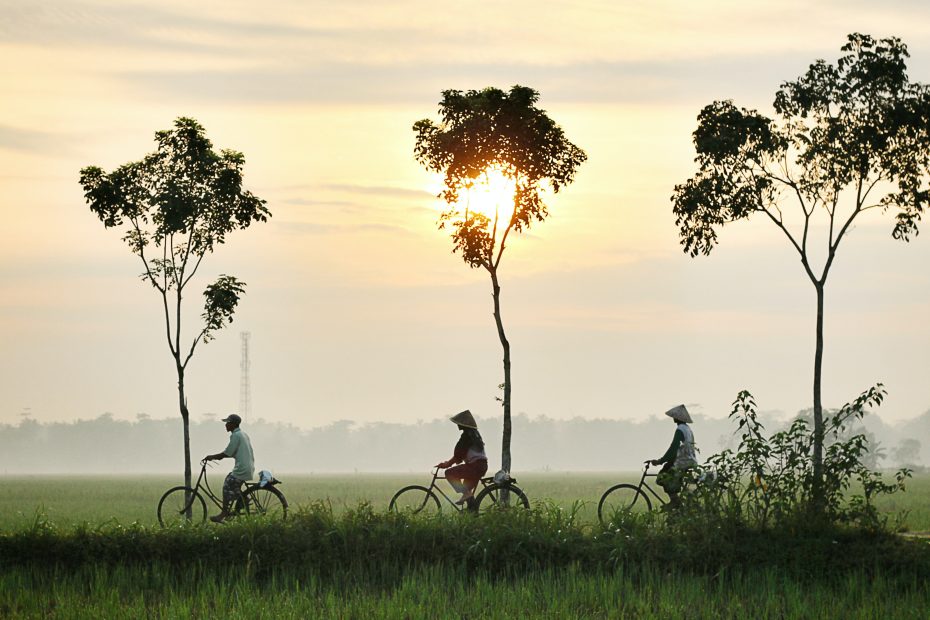Table of Contents
Introduction
Indonesia is a fascinating country consisting of over 17,000 islands in Southeast Asia. With a population of over 270 million people and over 300 ethnic groups, Indonesia has a rich and diverse cultural heritage spanning thousands of years. From ancient kingdoms to colonial influences, Indonesia’s culture has evolved dramatically across the centuries. This article will explore key aspects of Indonesian culture and society, tracing its journey from past to present.
Ancient Indonesia
The earliest known kingdoms in Indonesia emerged around the 4th century CE. These included Tarumanagara, Mataram, and Srivijaya among others. Located along major trade routes, these kingdoms became cosmopolitan hubs where Indian and Chinese influences mixed with indigenous culture. Hinduism and Buddhism became dominant religions, inspiring temple complexes like Borobudur, still the largest Buddhist temple in the world. Ancient Indonesian society was shaped by these South Asian belief systems and artistic forms like dance, gamelan music, shadow puppetry, and batik textiles.
Colonial Period
In the 16th century, Indonesia fell under Dutch control as the Dutch East India Company expanded its maritime empire. The Dutch instituted an extractive colonial system that exploited natural resources like spices. They also imposed a racial and economic hierarchy that marginalized indigenous Indonesians. While fiercely opposed at times, Dutch rule lasted for over 350 years until the 20th century. It left an indelible mark on Indonesian society, including the widespread use of the Dutch language among educated elites. Parts of Indonesia also came under British and Portuguese influence for periods of time.
Independence and Nation Building
In the early 20th century, Indonesian nationalism began to grow, inspired by leaders like Sukarno. After a protracted independence struggle, Indonesia finally achieved nationhood in 1945. The national motto “Unity in Diversity” reflects Indonesia’s multiethnic populace. Pancasila, the official philosophical foundation, enshrines principles like belief in God, humanity, unity, democracy, and social justice. As a new nation, Indonesia grappled with forging unity across its far-flung islands while caught in the global Cold War struggle.
Contemporary Culture
Today, Indonesian culture juxtaposes age-old traditions and modern trends. While most Indonesians are Muslim, sizeable Hindu, Protestant, Catholic, Buddhist, and Confucian communities exist. Ritualized offerings and spirit beliefs persist alongside the major religions. Rice, coconut milk, chilli peppers, and spices define Indonesian cuisine. Indonesian artforms like gamelan orchestras, batik, and shadow puppetry maintain their appeal. Contemporary forms like pop music and films flourish too. Tradition is also reinvented, as seen in the rise of Muslim fashions and modern mosque architecture.
Challenges and Changes
In recent decades, Indonesia has rapidly modernized, though traditional ways still hold sway in villages. Most Indonesians now live on Java or other urban centres. Consumerism and mass media have penetrated society, often challenging traditional norms. Many women work outside home, but gender roles evolve slowly. As a populous, Muslim-majority democracy, Indonesia faces complex challenges balancing religiosity, secularism, and pluralism. Environmental sustainability is another major concern.
Looking Ahead
To navigate the 21st century, Indonesia aims to preserve its cultural heritage while embracing change wisely. Educational reforms try to equip youth for the digital economy while grounding them in Indonesian ethics. The government also promotes cultural institutions and the creative arts to foster national identity. Indonesia has become a global IT hub but still relies on agriculture and natural resources. This vast archipelagic nation continues to define its place, balancing its historic legacies with aspirations for an advanced, prosperous future.
Conclusion
In summary, Indonesian culture has been shaped by forces of religion, trade, colonialism, independence, modernity, and globalization across the centuries. From animism and Hindu-Buddhist kingdoms to the world’s largest Muslim population today, Indonesia’s multilayered society synthesizes diverse influences. While facing complex challenges, Indonesia retains a vibrant cultural spirit. Its history and heritage endure as sources of national identity and pride, even as the country navigates its role in the modern world. Indonesia’s cultural journey continues to evolve, linking its past with its unfolding present and future.
FAQs
Q: What are some of Indonesia’s ancient kingdoms?
A: Major ancient kingdoms include Srivijaya, Mataram, Tarumanagara, Singhasari and Majapahit, spanning from the 7th to 15th centuries CE. They were influential hubs for trade and the spread of Hinduism-Buddhism in Southeast Asia.
Q: How did Dutch colonization impact Indonesian culture?
A: Dutch rule for over 350 years entrenched the Dutch language among elites and led to Christian conversion. But it also spurred nationalist resistance, helping inspire Indonesia’s independence struggle.
Q: What does Indonesia’s national motto “Unity in Diversity” signify?
A: It reflects how Indonesia aims to forge national unity and integrity despite its multiethnic, multilingual society spread across thousands of islands.
Q: What are some examples of traditional Indonesian artforms?
A: Ancient Indonesian artforms that endure today include gamelan orchestra music, shadow puppet shows, batik textiles, and woodcarving and dance.
Q: How is Indonesian culture balancing traditional values and modernity?
A: Through education and cultural policies that transmit ethical values while equipping youth for 21st century jobs. By reinventing traditional artforms using modern technology and media.
